Copyright 2020 - 2021 irantour.tours all right reserved
Designed by Behsazanhost
Sour and Sweet
Sour and Sweet
The Secret Ingredients of Persian Cuisine
By: Gilgamesh
Each culinary culture compromises a well-known side and another side that is hidden and only practiced in private homes, away from the eyes of tourists. Iranians' kitchens and dishes are filled with hidden gems that are based on fruits. If we wish to describe a unique and distinctive characteristic of the Persian kitchen, throughout history and until today, it would be the use of dry or fresh fruits, fruit purée or extracts to give various distinctive flavors and create various tastes and dishes. Today, the preparation of fruit dishes and drinks is one of the commonalities of Persian cuisine nationwide. Otherwise, there is a sharp difference between the sweets, drinks, and dishes made by various Iranian ethnic groups. In this article, we are going to take a look at three widely-known gems of Persian cuisine.
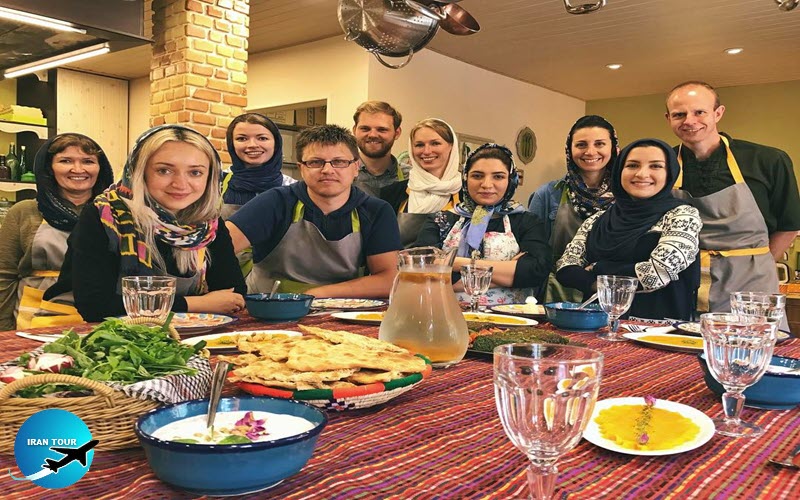 |
Fruit paste
Making purée or adding salt to fruit were two methods of preserving extra fruit in the past. Different kinds of fruit pastes play a key role in the preparation of well-known Persian dishes, namely: Fesenjan - an Iranian stew flavored with pomegranate paste and ground walnuts; Abgoosht (a juicy stew, which is traditionally prepared with legumes, spices, and meat). They are also used in the preparation of stuffed chicken and fish and as condiments in many Persian stews. The best-known Persian fruit paste is made of pomegranate - a symbolic and mysterious fruit in Persian culture. Various types of pomegranate paste -ranging from sour to sweet - are used in different dishes. In addition to pomegranate, which is widely used in Iran, other fruit pastes are made from sweet or sour apple, medlar, quince, lime, unripe grape, rhubarb, sour cherry, persimmon, bitter orange, and various kinds of plum, berries, cornelian cherry, citron, etc. These are used in different regions, depending on the local fruits available for preparing foods. Nowadays, however, the making of fruit pastes is not limited to local or regional fruits. With the availability of exotic fruits in Iran, Iranian chefs are making new fruit pastes and using, for example, kiwi paste as a new condiment in some Persian foods.
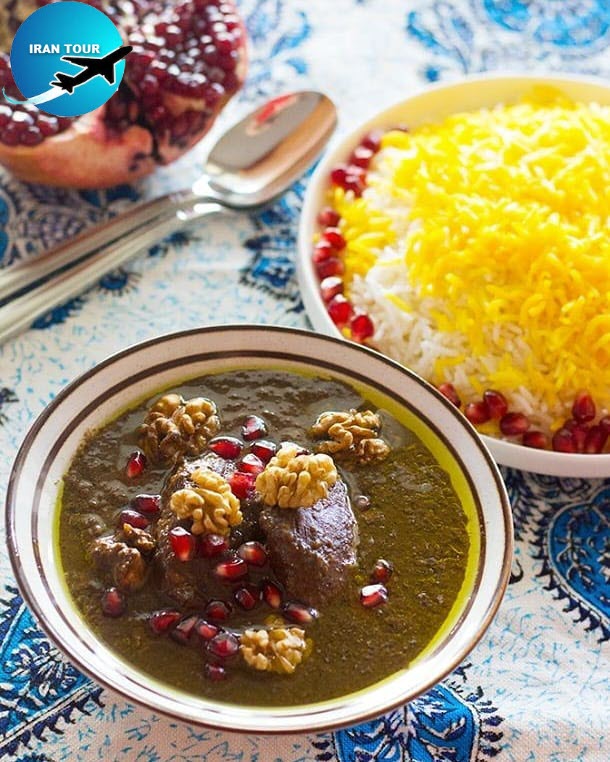 |
| Fesenjoon is an Iranian stew flavored with pomegranate paste and ground walnuts. It is traditionally made with poultry (duck or chicken). Fesenjoon can also be made using balls of ground meat. Depending on the recipe, and the taste of pomegranate used to make the paste it can have a sweet or sour taste. This delicious food, which is served with rice, is originally from Guilan Province and is extremely popular among Iranian people. |
The production of pastes in some Iranian villages is an eye-catching ritual, a tradition closely interwoven with many other customs, beliefs, and folklore. In general, making a fruit paste involves picking the fruit, smoothing them by pitting and blending, and either cooking or drying the fruit flat, using some salt. Except for the picking of the fruits, normally women are in charge of making fruit pastes. One of the tasty foodstuffs that are made in a similar way to fruit pastes is fruit rolls, known as Lavashak, which is specific to modern Iran. Fruit rolls are made by spreading a thin layer of fruit purée, flavored with salt, onto a copper or zinc tray for drying in the sun. Ultimately, they look like beautifully colored leather sheets and are used as tasty snacks, popular amongst children. Similar to different pastes, their tastes range from sour to sweet. Because they are made from fresh fruit, the fruit rolls are highly nutritious. Fruit rolls can be also be used as 'dried pastes' in some dishes to flavor them. In Persian cuisine, fruit pastes are not only used to add a sour or sweet flavor to the dishes but also to release the flavor of the fruit in them. Fruit pastes are popular with Iranians and experiencing them is one of the most memorable aspects of Persian dishes for tourists to savor long after they have left.
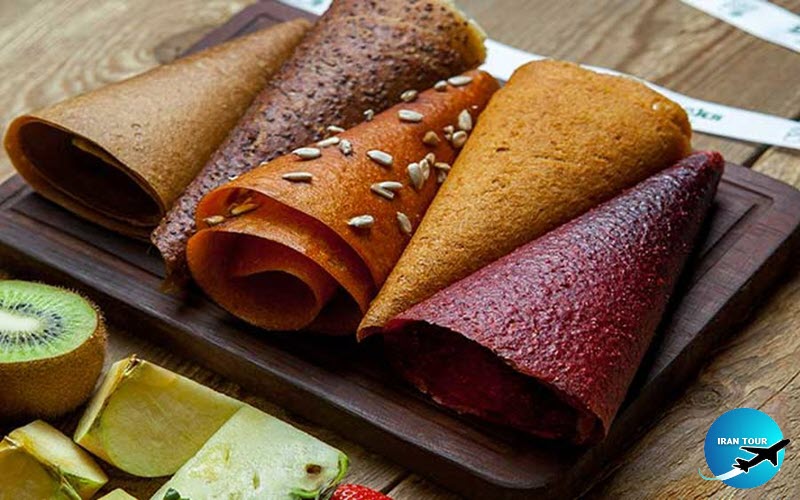 |
| If we wish to describe a unique and distinctive characteristic of the Persian kitchen, throughout history and until today, it would be the use of dry or fresh fruits, fruit purée or extracts to give various distinctive flavors and create various tastes and dishes. Today, the preparation of fruit dishes and drinks is one of the commonalities of Persian cuisine nationwide. Otherwise, there is a sharp difference between the sweets, drinks, and dishes made by various Iranian ethnic groups. |
-Vinegar and Shireh
Iranians learned how to use 'oxymel, which is a mixture of honey and vinegar, as a drink from the Greeks. Due to the mass cultivation of grapes, dates, and apples in Iran, Shireh - a fruit syrup that is used as a sweetener-has become so popular amongst Iranians that the syrup is produced widely from almost all surplus and available fruits. In Iran, the techniques for preparing vinegar are very similar to those in other parts of the world. The taste of vinegar, regardless of its quality and the kind of fruit it is made from, depends on the acetobacter aceti used in its production. In some parts of Iran, individual strains of acetobacter aceti have been passed from generation to generation and are considered part of Iran's culinary heritage, just like balsamic vinegar in Italy!
Vinegar is an important ingredient in the preparation of various Iranian types of pickles, made from whole or cut vegetables preserved in brine or vinegar. The serving of pickles as a side dish has a long history in Persian cuisine: the eminent Persian alchemist Muhammad ibn Zakariya al-Razi (854-932 or 925 CE) devised several recipes for vinegar pickles.
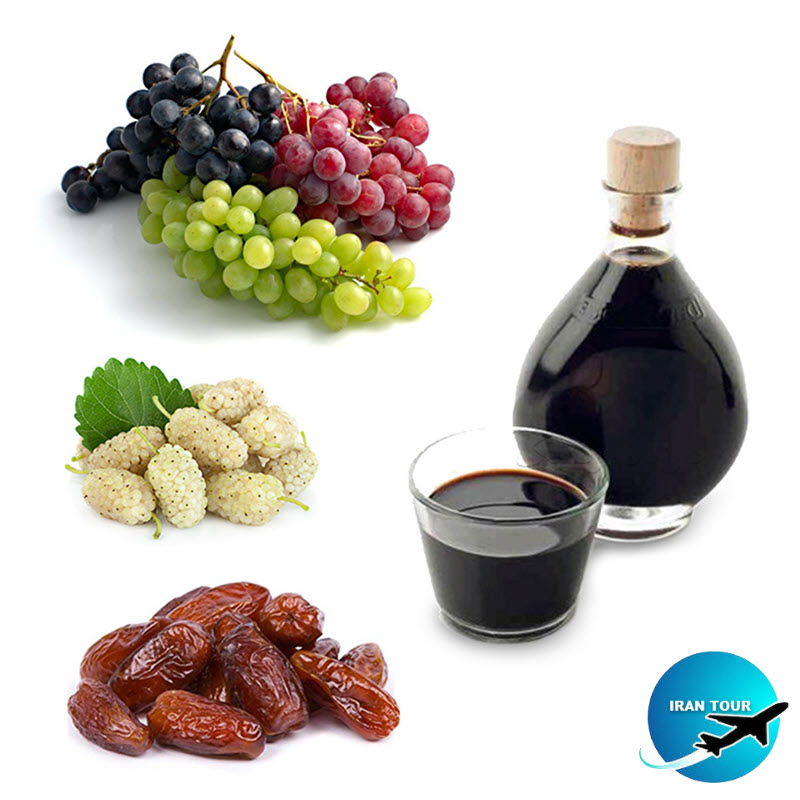 |
| Shire is a fruit syrup, normally made of grapes, dates, or apples, and is used as a sweetener. It has become so popular amongst Iranians that is produced widely from almost all surplus and available fruits. |
The preparation of Shireh in Iran is a spectacular process. In the western province of Hamedan, the preparation of Shireh from grapes is a tourist attraction. During the process grape juice is squeezed using traditional methods. Mythologists believe that the traditional methods for squeezing grape juice have roots in the pre-Zoroastrian creation myth in which Mithra kills a bull and its blood spills on the earth. From the place where the blood spilled, all the plants that currently exist were said to burst forth for the first time on earth, including the grapevine.
Today juicers are used for squeezing grapes. Afterward, the grape pulp is filtered and edible sun-roasted white soil is added to the juice. The mixture is then boiled and strained. This curious mixture of fruit juice and soil is what makes grape Shireh, a nutritional syrup. Another, thinner type of syrup is known as Dooshaab. Although in some areas Shireh may be known as Dooshaab as well, in Persian cuisine Dooshaab is markedly different: it is thinner and has a fruitier and sourer taste.
 |
A great deal of the vinegar produced in Iran is made from grapes, dates, or apples, but other fruits such as pear, persimmon, medlar, plum, berry, and fig also make good vinegar and are produced in various regions across the country. Very occasionally some Iranian manufacturers make vinegar from sugarcane, rice, or pomegranate.
In Persian cuisine, vinegar and Shire are used to balance flavors -sour and sweet-in dishes. As previously mentioned, they are also used to add a fruity taste to the food. The use of vinegar and Shireh in dishes is a signature of Persian cuisine, and what distinguishes it from other countries' cuisines. Vinegar is used to give a sour taste to the food while Shirehis used to counterbalance the sour taste by adding a sweet flavor. Depending on individual tastes or the ethnic group preparing it, the dish can either taste sourer or sweeter. The mixture of vinegar and Shire, known as Serke-Shire, is also a popular spectrum of flavors in Persian drinks. Sharbat From vinegar and Shireh we come to sharbat, a cool drink popular with Iranians since ancient times.
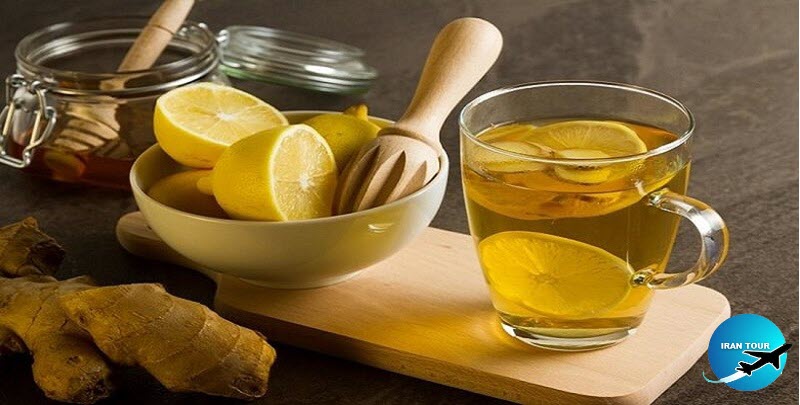 |
| Some favorite kinds of sharbat amongst Iranians are those made with herbal distillates such as mint, coriander, he borage, chicory, and pussy willow. |
The availability of different types of fruits, Vinegar, Shireh, as well as high-quality sugar, has enabled Iranians to popularise sharbat. The French and Italian words sorbet and Sorbetto respectively derive from the Persian 'sharbat and Italian Sorbetto is said to be based directly on a Persian sharbat recipe. The popularity of sharbat amongst Iranians was so obvious to travelers from the East and the West that it was mentioned frequently in many of the travelogues of the great travelers, including Jean Chardin (1643-1713 CE). Due to the cultivation of superlative sugarcane in Khuzestan Province as well as the ice houses (Yakhchal) and healthy water supply provided by qanats (ancient underground water channels), in ancient Persia, different kinds of sharbat were made from fruits and spices. A wide variety of Sharbats were served as desserts or with meals. One of the best-known Sharbats is Sekanjabin (or Serkeh-Angabin), which means vinegar and honey and is known as 'oxymel' elsewhere. There are some 1200 distinctive recipes for making sekanjabin in Persian cookbooks, using different types of vinegar, Shireh, honey, sugar, fruit juice, and vegetables. A simple, fast and healthy Iranian fruit drink can be made by mixing vinegar and Shireh with water and ice; this can also be used in making various foodstuff.
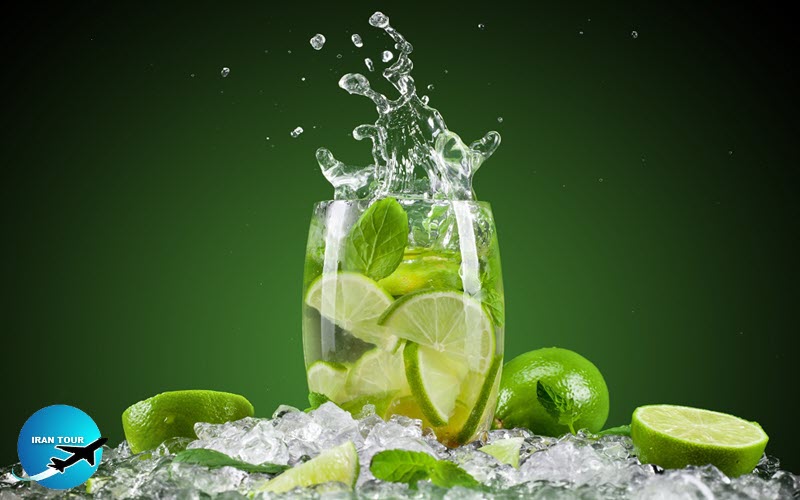 |
Some other favorite kinds of sharbat amongst Iranians are those made with herbal distillates such as mint, coriander, borage, chicory, and pussy willow. Each of these Sharbats has different nutritional values and is often mixed with flixweed, wild basil seeds, or even grated cucumber. Fruit Sharbats can be made from almost any kind of fruit and are a mixture of fruit juice and sugar and sometimes spices, which are boiled together to thicken. The Sharbats are normally served with water and ice cubes. Sour cherry, pomegranate, raspberry, jujube, and bitter orange Sharbats are among the better-known Iranian sharbat. There are also other widely known kinds of sharbat made from a mixture of two fruits, such as quince and fresh lime juice, which is known as Behlimoo.
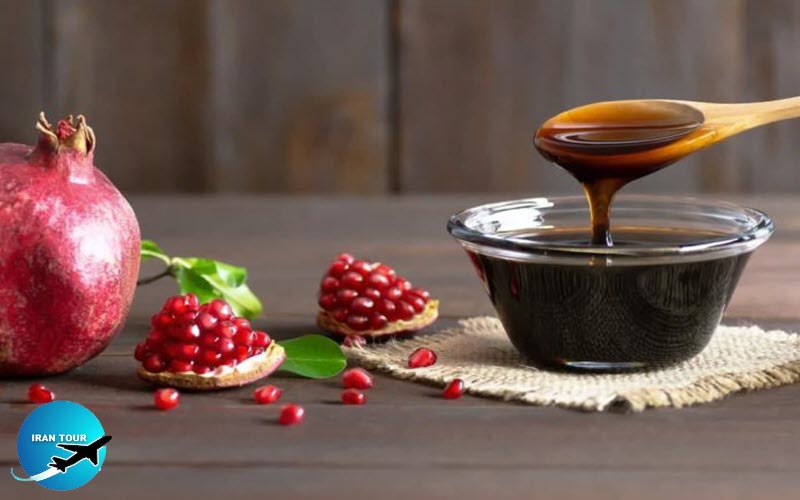 |
| Pomegranate paste is the best-known Persian fruit paste. Various types of pomegranate paste-ranging from sour to sweet -are used in different dishes. They are also used in the preparation of stuffed chicken and fish and as condiments in many Persian stews. |
Moreover, Sharbats made from imported fruits such as tamarind and mango have been made in Iran for a long time. Iranians even used to make strange-tasting sharbat drinks such as onion or asparagus to soothe medical ailments. In the same way as fruit pastes and vinegar and syrup, Sharbats provide evidence of Iranians' longstanding enjoyment of fruity tastes in their cuisine. Drinking Sharbats with food is the signature of Iranian cuisine. Even before the presence of coffee houses in Iran, sharbat houses were where people used to go to have a chat and socialize together. There are still sharbat houses, which play host to locals and tourists alike, to be found in Kashan and Isfahan. These distinctive tastes provide unique flavors to Persian dishes. While these flavors are only found in Iranian kitchens, they impart such a characteristic and pleasant taste that they have helped to make Iranian cuisine well-known in the world!
- Details
- Category: IRAN Blog
